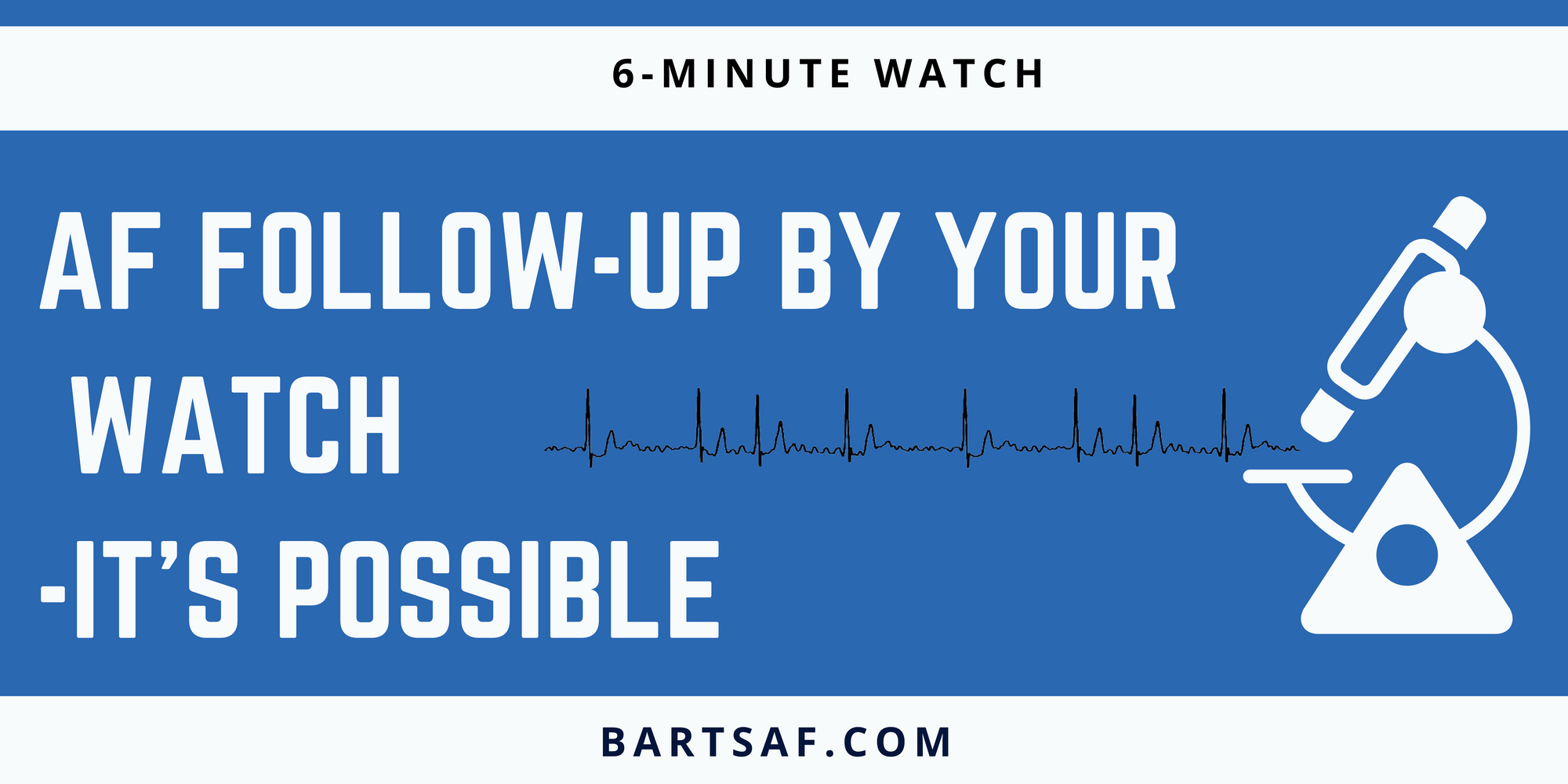Wearables for AF follow-up: Proof of concept

Yes we can!
It's a 'yes we can' day.
Your Apple Watch can record ECGs and so inferring that it could be used to monitor your Atrial Fibrillation after ablation may seem like a reasonable assumption to make.
However, the burden of proof remains- to scientifically prove that it can actually be used in this way.
We have to demonstrate that the megabytes of data and ECG that a patient can record can actually be used in a sensible way to show a result. We have to demonstrate feasibility first and then only can we evaluate its benefit.
And so, today we will be presenting our feasibility analysis at the HRX Conference- that shows that not only can we use Apple Watch data to track a patients outcome after ablation, but also that if we integrate different types of data that the watch records, we can show outcomes in a completely novel way.
HRX is an ideal forum to share these results. It is a 3-day conference for innovation and tech-enthusiasts, specifically for those working with patients who have arrhythmias like Atrial Fibrillation. So hopefully lots of stimulating discussion will follow that will help us build on these findings.
What have we shown
With the help of kind patients, including those enrolled in the AFFU-AW study, we have been able to measure their ‘activity levels’ before versus after AF ablation. Activity levels are an important measure for many patients- it correlates with their quality of life and lower risk of death. Higher activity levels could mean being able to do what they want to rather than being limited by symptoms such as tiredness or shortness of breath- commonly seen in AF.

And so we have developed a way to extract and anonymise this information to compare how their activity has changed after ablation. When you use this on your own- it can provide an additional perspective to view the effectiveness of the procedure- combined with a patients reported change in symptoms. We saw acitivity levels significantly improved in many patients but not all- and what that means is unclear and something we will continue to study. But for now, we know we can measure this and use it in this way.
Combining parameters
But activity levels is not all we’ve got. We built a script that overlays the ECG result on that day onto a patients activity level for that day. So we can calculate how active they are on AF days versus no AF days. We can make pretty pictures like below but more importantly a patient and their doctor can use it when evaluating how troublesome AF recurrences are. If a patients activity level drops and is significantly lower on AF days, this may be helpful evidence to support a repeat attempt at treatment. Conversely if there’s no difference in activity levels and a patient doesnt report any significant worsening of their symptoms on those days, perhaps things can be left alone.

So what next
It is one small, but significant, step forward in our AFFU-AW study. We have built the tools we need to evaluate the Apple Watch data in patients undergoing AF ablation, so now we have to get on and complete the study. We must acknowledge there are limitations when interpreting the data from these devices including incomplete use, technical malfunctions and other events that can affect activity levels. We will have to see if these techniques can overcome these limitations or if they drown out any benefits.
In the Study, we will use these tools to compare how these new outcome markers compare to the ones traditionally used, how they differ in patients who have no AF recurrence versus patients who do have a recurrence and whether the ECG data improves the care we provide for patients with AF.
You can watch a pre-recording of the presentation that will be given at HRX by clicking on the video below.
Once again, thank you to all the patients who have volunteered their time and help in these studies.
The paper showing the link between step count and survival: Paluch AE, Bajpai S, Bassett DR, Carnethon MR, Ekelund U, Evenson KR, Galuska DA, Jefferis BJ, Kraus WE, Lee IM, Matthews CE, Omura JD, Patel AV, Pieper CF, Rees-Punia E, Dallmeier D, Klenk J, Whincup PH, Dooley EE, Pettee Gabriel K, Palta P, Pompeii LA, Chernofsky A, Larson MG, Vasan RS, Spartano N, Ballin M, Nordström P, Nordström A, Anderssen SA, Hansen BH, Cochrane JA, Dwyer T, Wang J, Ferrucci L, Liu F, Schrack J, Urbanek J, Saint-Maurice PF, Yamamoto N, Yoshitake Y, Newton RL Jr, Yang S, Shiroma EJ, Fulton JE; Steps for Health Collaborative. Daily steps and all-cause mortality: a meta-analysis of 15 international cohorts. Lancet Public Health. 2022 Mar;7(3):e219-e228. doi: 10.1016/S2468-2667(21)00302-9. PMID: 35247352; PMCID: PMC9289978.
